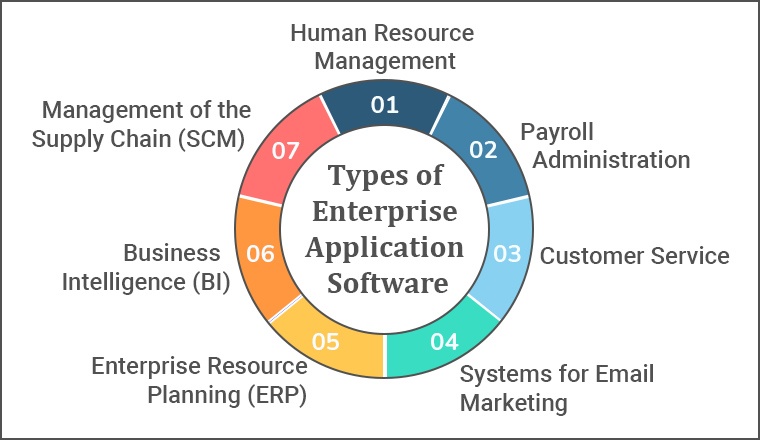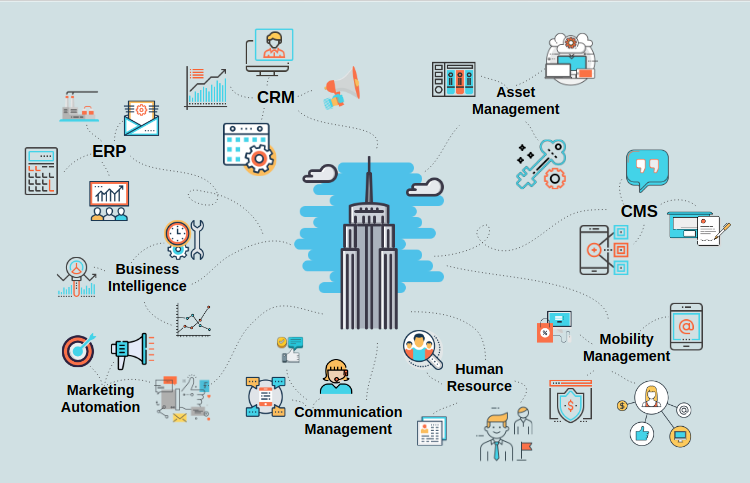Software Solutions : 7 Proven Strategies to Maximize ROI
Software Solutions : 7 Proven Strategies to Maximize ROI
Software Solutions Introduction:
In today’s digital age, where competition is fierce and customer expectations are higher than ever, delivering exceptional customer experience is paramount for businesses to thrive. Customer experience encompasses every interaction a customer has with a company, from browsing a website to receiving support after making a purchase. It’s not just about providing a product or service; it’s about creating meaningful and memorable experiences that keep customers coming back.
The importance of customer experience cannot be overstated. Research shows that customers are willing to pay more for a better experience, and they are more likely to remain loyal to companies that prioritize their needs and preferences. In fact, according to a study by PwC, 73% of customers point to customer experience as an important factor in their purchasing decisions.
This is where software solutions come into play. Software has the power to revolutionize the way businesses interact with their customers, providing new opportunities to deliver personalized, efficient, and seamless experiences across every touchpoint. Whether it’s through a user-friendly website, a mobile app, or an automated customer service system, software solutions have the potential to transform the customer experience and drive business success.
By leveraging the latest technologies, such as artificial intelligence, machine learning, and data analytics, businesses can gain valuable insights into customer behavior and preferences, allowing them to tailor their products and services to meet individual needs. For example, an e-commerce platform can use data analytics to recommend products based on a customer’s past purchases, while a customer service chatbot can use artificial intelligence to provide quick and accurate responses to customer inquiries.
In this blog post, we’ll explore seven key strategies for using software solutions to enhance customer experience and drive IT success. From personalisation and customisation to omni-channel integration and data-driven insights, these strategies will help businesses stay ahead of the curve and deliver exceptional experiences that keep customers coming back for more.
1. Personalisation and Customisation
Personalization and customization play a crucial role in enhancing customer experience. In today’s competitive market, customers expect tailored interactions and personalized solutions that cater to their specific needs and preferences. By leveraging software solutions, businesses can effectively meet these expectations and deliver exceptional customer experiences.
Importance of Personalization:
Personalization allows businesses to connect with customers on a deeper level by providing them with relevant and meaningful experiences. By understanding each customer’s preferences, behavior, and past interactions, businesses can deliver targeted content, product recommendations, and offers that resonate with individual customers. This not only enhances customer satisfaction but also increases engagement, loyalty, and ultimately, revenue.
Strategies for Implementation:
- Customer Data Collection:
- Implement software solutions to collect and analyze customer data from various touchpoints, including website interactions, social media engagement, purchase history, and more.
- Utilize data analytics tools to gain valuable insights into customer behavior, preferences, and trends.
- Segmentation and Targeting:
- Segment customers based on demographics, past purchase behavior, browsing history, and other relevant factors.
- Use software solutions to create targeted marketing campaigns, personalized emails, and product recommendations for each customer segment.
- Dynamic Content Personalization:
- Implement software solutions that enable dynamic content personalization on websites, mobile apps, and other digital channels.
- Deliver personalized content, product recommendations, and offers in real-time based on each customer’s behavior and preferences.
- Automation and Machine Learning:
- Leverage automation and machine learning algorithms to automate personalized interactions and recommendations.
- Continuously optimize and refine personalization strategies based on customer feedback and behavioral data.

By implementing these personalised and customised software solutions, businesses can create unique and memorable customer experiences, driving increased satisfaction, loyalty, and long-term success.
2. Omni-channel Integration
In today’s digitally-driven world, customers interact with businesses across a variety of channels, including websites, mobile apps, social media platforms, email, and in-store visits. Providing a seamless experience across these channels is crucial for enhancing customer satisfaction and loyalty.
Importance of Omni-channel Integration:
Omni-channel integration ensures that customers have a consistent and unified experience regardless of the channel they use to interact with a business. Whether a customer starts their journey on a mobile device, continues it on a desktop computer, and completes it in-store, they expect a seamless transition between channels without having to repeat themselves or start over.
For businesses, omni-channel integration is essential for providing personalized and relevant interactions with customers. It allows them to gather data from multiple touchpoints and use it to tailor the customer experience to individual preferences and behaviors.
Strategies for Integrating Software Solutions for Omni-channel Customer Experience:
- Unified Customer Profiles: Implement software solutions that centralize customer data from all channels into a single, unified profile. This allows businesses to have a 360-degree view of each customer, including their purchase history, preferences, and interactions across different touchpoints.
- Cross-channel Communication: Use software solutions that enable seamless communication and coordination between different channels. For example, if a customer adds an item to their cart on the website but doesn’t complete the purchase, they should receive a reminder email or notification on their mobile app.
- Consistent Branding and Messaging: Ensure that branding and messaging are consistent across all channels to maintain a cohesive customer experience. Software solutions can help in managing brand assets, templates, and content across different platforms.
- Real-time Data Synchronization: Implement software solutions that synchronize data in real-time across all channels. This ensures that customers always have access to the most up-to-date information, such as product availability, pricing, and promotions.
By integrating software solutions for omni-channel customer experience, businesses can provide a seamless and cohesive journey for their customers, ultimately leading to increased satisfaction, loyalty, and retention.
3. Data-driven Insights
In today’s competitive business landscape, understanding and anticipating customer needs is essential for maintaining a competitive edge. Data-driven insights play a crucial role in achieving this goal. By leveraging data effectively, businesses can gain valuable insights into customer behavior, preferences, and trends, allowing them to tailor their products and services to meet evolving customer needs.
Importance of Leveraging Data:
The importance of leveraging data to understand and anticipate customer needs cannot be overstated. With the vast amount of data generated by customers through their interactions with businesses, there is a wealth of information waiting to be tapped into. By analyzing this data, businesses can gain valuable insights into customer preferences, buying behavior, and pain points. This allows them to make informed decisions about product development, marketing strategies, and customer service initiatives.
Strategies for Using Software Solutions:
To gather and analyze customer data effectively, businesses need the right software solutions in place. There are various strategies that businesses can employ to make the most of their data:
- Implement Customer Relationship Management (CRM) Software: CRM software allows businesses to centralize customer data and track interactions across multiple touchpoints. By capturing and storing customer information in a single database, businesses can gain a holistic view of their customers and their preferences.
- Utilize Data Analytics Tools: Data analytics tools can help businesses analyze large volumes of data quickly and efficiently. These tools use advanced algorithms to identify patterns, trends, and correlations in the data, providing valuable insights that can inform business decisions.
- Invest in Predictive Analytics: Predictive analytics uses historical data to forecast future trends and behaviors. By analyzing past customer behavior, businesses can predict future trends and anticipate customer needs, allowing them to proactively address customer concerns and stay ahead of the competition.
By leveraging data-driven insights, businesses can gain a deeper understanding of their customers and their needs, allowing them to deliver personalised experiences that drive customer satisfaction and loyalty.
4. Automation and Efficiency
In today’s fast-paced digital landscape, automation plays a crucial role in streamlining processes and enhancing overall customer service. By automating repetitive tasks and optimizing workflows, businesses can improve efficiency, reduce human error, and deliver a more consistent and seamless experience to their customers.
Importance of Automation:
Automation is essential for streamlining internal processes and improving customer service in several ways:
- Time Savings: By automating repetitive tasks, employees can focus on more complex and value-added activities, leading to significant time savings.
- Consistency and Accuracy: Automated processes ensure consistency and accuracy, reducing the risk of human error and improving the overall quality of service.
- Enhanced Customer Experience: Automation enables businesses to deliver faster and more reliable service, resulting in improved customer satisfaction and loyalty.
Strategies for Implementation:
Implementing software solutions for automation and efficiency involves several key strategies:
- Identify Repetitive Tasks: Identify tasks and processes that are repetitive and time-consuming. These could include data entry, email responses, invoice processing, and more.
- Choose the Right Automation Tools: Select software solutions that are specifically designed to automate the identified tasks and processes. This could include workflow automation software, robotic process automation (RPA) tools, and customer service automation platforms.
- Integrate Systems: Ensure seamless integration between different software systems and applications to enable smooth automation of processes across the organization.
- Provide Training and Support: Train employees on how to use the automation tools effectively and provide ongoing support to address any issues or challenges that may arise.
By implementing these strategies, businesses can harness the power of automation to streamline processes, improve efficiency, and ultimately deliver a superior customer experience. Automating routine tasks frees up valuable time and resources, allowing employees to focus on delivering exceptional service and building stronger relationships with customers.
5. Integration with Customer Relationship Management (CRM) Systems
In today’s competitive business landscape, customer relationship management (CRM) systems play a crucial role in helping businesses understand their customers better and build stronger relationships with them. Integrating software solutions with CRM systems is essential for better customer management and improved overall customer experience.
Importance of Integration:
Integrating software solutions with CRM systems allows businesses to centralize customer data, interactions, and feedback. This integration provides a comprehensive view of each customer, including their purchase history, preferences, and previous interactions with the company. By having all this information in one place, businesses can personalize their interactions with customers, anticipate their needs, and provide more tailored and targeted services.
Moreover, integrating software solutions with CRM systems enables businesses to automate various customer-related processes, such as lead management, sales forecasting, and customer support. This automation not only increases efficiency but also ensures consistency in customer interactions across different touchpoints.
Strategies for Seamless Integration:
To ensure seamless integration with CRM systems, businesses should prioritize compatibility and interoperability when selecting software solutions. The chosen software should have built-in integration capabilities or provide easy-to-use APIs for connecting with CRM systems.
Additionally, businesses should define clear objectives and requirements for the integration process. This includes identifying the specific data points and workflows that need to be integrated between the software solution and the CRM system. Having a clear roadmap and project plan helps streamline the integration process and ensures that it meets the business’s needs and objectives.
Furthermore, businesses should provide adequate training and support to their employees to effectively utilize the integrated software solutions. Training employees on how to access and leverage customer data from the CRM system through the integrated software ensures that they can make informed decisions and provide better service to customers.

In summary, integrating software solutions with CRM systems is crucial for better customer management and enhanced overall customer experience. By following these strategies for seamless integration, businesses can leverage the power of CRM data to personalize interactions, automate processes, and improve customer satisfaction and loyalty.
6. Continuous Improvement and Feedback Loop
In the dynamic landscape of customer experience, the importance of gathering feedback and making continuous improvements to software solutions cannot be overstated. Customer needs and preferences evolve rapidly, making it essential for businesses to stay agile and responsive. Here’s why implementing a feedback loop and making iterative improvements is crucial for IT success:
Importance of Gathering Feedback:
Gathering feedback directly from customers provides invaluable insights into their experiences with your software solutions. Whether it’s identifying pain points, understanding feature requests, or simply gauging overall satisfaction, customer feedback serves as a compass for improvement. By actively seeking and listening to customer feedback, businesses can identify areas for enhancement and prioritize development efforts effectively.
Continuous Improvement:
Continuous improvement is not a one-time endeavor but a mindset that needs to be ingrained within the organization. Software solutions should be treated as living entities that evolve with the changing needs of customers. Regular updates and enhancements ensure that the software remains relevant, efficient, and aligned with the organization’s goals.
Strategies for Implementing a Feedback Loop:
Implementing a feedback loop involves creating channels for customers to provide feedback easily and ensuring that this feedback is acted upon. This can include:
- Surveys and Questionnaires: Sending out regular surveys to gather feedback on various aspects of the software.
- User Testing and Beta Programs: Involving customers in the testing phase of new features or updates to gather real-time feedback.
- Monitoring Support Channels: Analyzing customer support interactions to identify recurring issues or pain points.
- Social Media Listening: Monitoring social media channels for mentions, comments, and feedback about the software.
Making Iterative Improvements:
Once feedback is collected, it’s essential to act upon it promptly. Prioritize feedback based on its impact and feasibility, and implement changes in iterative cycles. This ensures that improvements are made steadily, without disrupting the user experience or overburdening development teams.
By establishing a robust feedback loop and making iterative improvements, businesses can ensure that their software solutions remain responsive, relevant, and aligned with customer needs and expectations.
7. Scalability and Flexibility
In today’s rapidly evolving digital landscape, customer needs and preferences can change overnight. To effectively cater to these changing demands, it’s crucial for businesses to invest in scalable and flexible software solutions.
Importance of Scalable and Flexible Software Solutions:
Scalability and flexibility are essential characteristics of software solutions that enable businesses to adapt to the evolving needs of their customers. Scalable software can handle increasing amounts of work or traffic without compromising performance. Similarly, flexible software can be easily modified or customized to accommodate changes in customer requirements or business objectives.
With scalable and flexible software solutions in place, businesses can:
- Handle Growth: As businesses expand and attract more customers, their software systems need to be able to handle increased workloads and user demands. Scalable software ensures that businesses can seamlessly accommodate growth without experiencing downtime or performance issues.
- Respond to Market Changes: Market trends and customer preferences are constantly changing. Flexible software solutions enable businesses to quickly adapt to these changes by modifying features, adding new functionalities, or making other adjustments as needed.
- Improve Customer Satisfaction: By ensuring that software systems can scale and adapt to changing customer needs, businesses can deliver a better customer experience. Whether it’s adding new features based on customer feedback or quickly resolving issues, scalable and flexible software solutions play a vital role in enhancing customer satisfaction.
Strategies for Ensuring Scalability and Flexibility:
To ensure that software solutions are scalable and flexible, businesses can:
- Use Cloud-based Solutions: Cloud computing provides a scalable infrastructure that can easily accommodate changes in demand. By leveraging cloud-based solutions, businesses can scale their software systems up or down as needed.
- Implement Modular Architecture: Breaking down software systems into smaller, modular components makes it easier to scale and modify individual parts of the system without affecting the entire application.
- Continuous Monitoring and Optimization: Regularly monitoring software performance and user feedback allows businesses to identify areas for improvement and make necessary adjustments to ensure scalability and flexibility.
By prioritizing scalability and flexibility in their software solutions, businesses can effectively adapt to changing customer needs and maintain a competitive edge in the market.
Conclusion
In today’s competitive digital landscape, providing an exceptional customer experience is paramount for businesses to succeed. Software solutions play a crucial role in enhancing customer experience, and here are seven key strategies to leverage them effectively:
- Personalization and Customization: Tailoring experiences to individual customer preferences enhances engagement and builds brand loyalty. Utilize software solutions to collect and analyze customer data, enabling personalized interactions across various touchpoints.
- Omni-channel Integration: Customers expect a seamless experience across all channels. Integrating software solutions to ensure consistency and continuity across channels—whether it’s online, in-store, or through mobile devices—is essential for meeting these expectations.
- Data-driven Insights: Leveraging customer data allows businesses to gain valuable insights into customer behavior and preferences. Implement software solutions to collect, analyze, and utilize data effectively, enabling data-driven decision-making and personalized customer interactions.
- Automation and Efficiency: Automation streamlines processes, reduces manual tasks, and enhances efficiency. Implement software solutions to automate repetitive tasks, freeing up time for your team to focus on providing exceptional customer service and experience.
- Integration with Customer Relationship Management (CRM) Systems: Integrating software solutions with CRM systems enables businesses to manage customer interactions more effectively. Utilize CRM software to centralize customer data, track interactions, and personalize communication for improved customer satisfaction.
- Continuous Improvement and Feedback Loop: Gathering customer feedback and making iterative improvements is key to enhancing the customer experience. Implement software solutions to gather feedback, analyze data, and make informed decisions to continuously improve your products and services.
- Scalability and Flexibility: Scalable and flexible software solutions are essential for adapting to changing customer needs and business requirements. Invest in software solutions that can grow with your business and easily adapt to evolving customer expectations.
Emphasis on the Importance of IT Success:
Successfully implementing these strategies requires a robust IT infrastructure and effective utilization of software solutions. By prioritizing IT success, businesses can significantly improve overall customer satisfaction and loyalty. Investing in the right software solutions and IT strategies not only enhances the customer experience but also drives business growth and success in today’s digital age.


